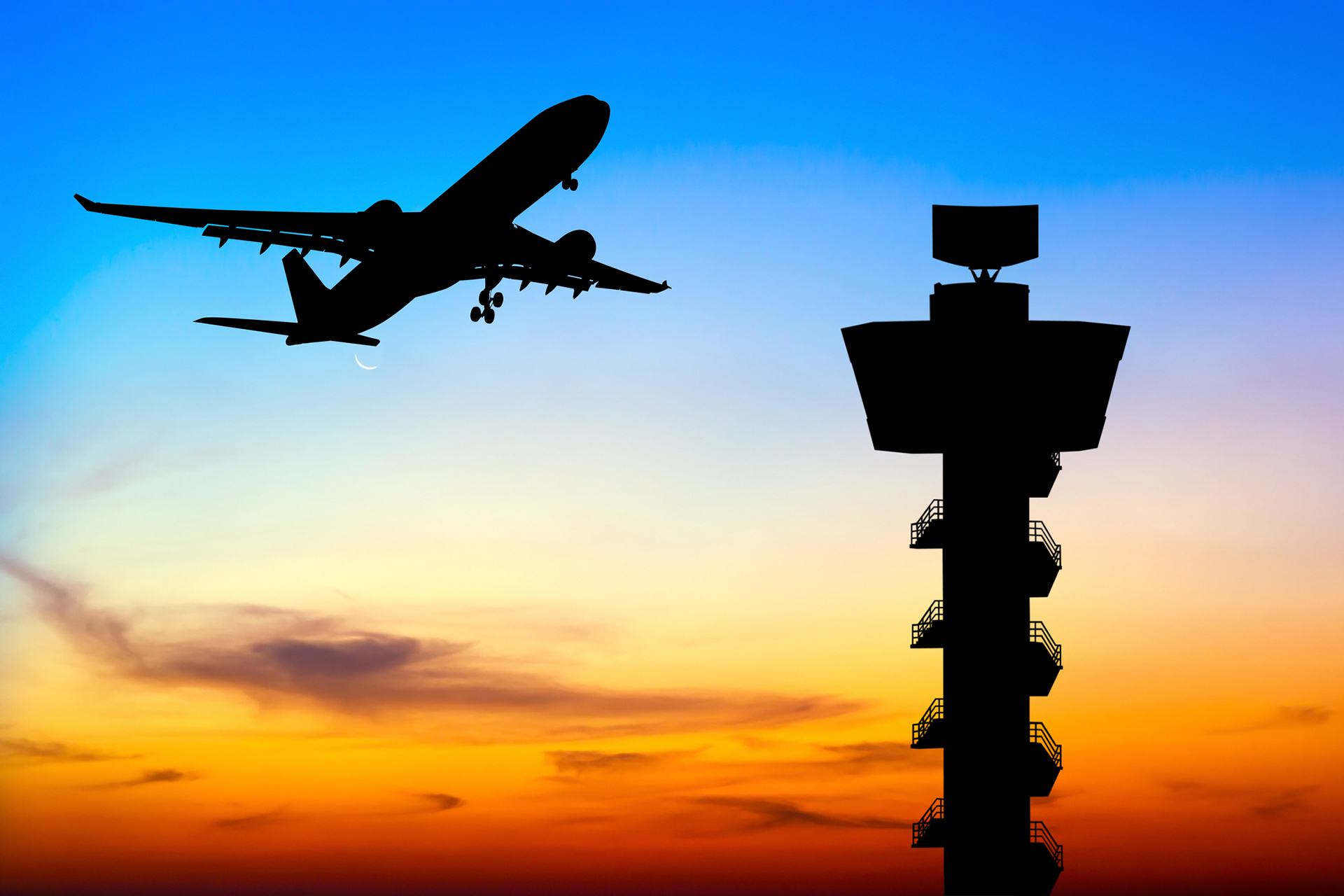
Leveraging COVID-19 crisis for more efficient, sustainable, and effective business models for ANSPs.
The aviation industry is expected to recover from the effects of the COVID-19 pandemic in 2024 and then begin again to grow at a projected 2%-3% annual rate. All the challenges the industry faced prior to the pandemic will return with new vigor, and the key aviation stakeholders – airlines, airports, and air navigation service providers (ANSPs) – if they are not acting now, will need to reorganize the airspace capacity to accommodate traffic while lowering the industry’s greenhouse gas footprint under extreme operational constraints. Given the circumstances, ANSPs must implement a massive change to meet future market demands and explore new opportunities. They are in a “make or break” moment to increase efficiency of operations and to determine their role in the future of aviation. They must take advantage of this moment to shift the focus from survival to rebuilding and to engage in effective transformation programs. This new paradigm will require ANSPs to become efficient and technology-driven players to avoid becoming just another local service provider.
Air traffic challenges post-pandemic
In 2020, the European network’s yearly average flight traffic fell by 57% compared to 2019. EUROCONTROL reported a cumulative net loss of €22.2 billion for European carriers in 2020 and 6.1 million fewer flights than 2019, while according to the International Air Transport Association, European demand measured in revenue passenger kilometers declined by 70% compared to 2019. A disruption of this magnitude puts at risk about 6.4 million jobs in Europe and €359 billion in GDP contributed by air transport. Airlines cut employee costs by about 35% during the crisis. The total financial impact on the European aviation industry has been calculated as a loss in revenues of approximately €56.2 billion in 2020. Air traffic is expected to recover to 2019 levels by 2024 in the best scenario (see figure, right), as long as the vaccine campaign is successful across the globe.
Focusing on the European air traffic management (ATM) sector, ANSPs are rewarded through route charges collected from airlines for services provided and, with the dramatic decline in traffic scenarios last year, EUROCONTROL estimated a loss of revenues of about €4.8 billion. COVID-19 impacts will continue to affect the industry for at least five years, via:
- Changes in travel behaviors and demand in both the business and leisure segments.
- Strong new regulations regarding health and safety, along with travel restrictions.
- Revised profit sharing among ecosystem players.
- A need for more organizational agility to cope with traffic fluctuation.
Before the pandemic, the main aviation operational stakeholders were struggling to reorganize the airspace and cope with increasing traffic and congestion. Major concerns were increasing capacity, improving punctuality, and advancing cooperation/integration within the network. Structural problems in the industry have not disappeared and will come up again when traffic returns to its path of growth. Until then, ANSPs have a unique chance to transform themselves into modern digital companies, contributing the newest ATM technology to improve efficiency and environmental sustainability in aviation. ANSPs also have the opportunity to better respond to new challenges by expanding their areas of influence into different domains, such as higher airspace (e.g., space tourism), unmanned aerial vehicle (UAV) emerging opportunities/business models (unmanned traffic management [UTM], fleet managers), and urban air mobility.

Challenges on routes of ANSPs
EUROCONTROL warns that, without a deep reorganization of the airspace and its processes, the service level of ANSPs will continue to worsen. In addition to aging infrastructure and operational concerns, ANSP challenges span these areas:
- Traffic congestion and delays. Over the last several years there have been consistent increases in the average en route delay per flight, doubling in 2019 to 1.57 minutes versus the 2015 level of 0.73 minute (see figure below). Without structural changes, the flight traffic increase is estimated to generate delays of up to almost eight minutes per flight by 2035.
- Cost structure. ANSPs are characterized by a high incidence of fixed costs, mainly related to labor costs, which hamper ANSPs’ agility when demand fluctuates.
- Revenue drops and safeguard schemes. The European Performance Scheme framework and the traffic risk-sharing mechanism limit the risk to ANSPs’ revenues. Nevertheless, the current mechanisms, due to the drop in traffic, are increasingly challenged by the airlines.

In addition, ANSPs may face further issues stemming from downside risks (consolidation of the currently fragmented cargo forwarders and a general economic slowdown), as well as upside opportunities (e-commerce development, small package shipping, economies of scale), which might mitigate the current negative forecast.
How to react in the short and long term
To build an effective transformation path, ANSPs should focus on some key pillars:
- Cooperating with all stakeholders. Common and agreed guidelines, measures, and regulatory frameworks are crucial for defining a stable and reliable environment that could accelerate the recovery process.
- Rethinking footprint and labor costs. A more flexible structure in terms of both operational footprint and economic structure is necessary to cope with the demand fluctuation and the rigidity of the fixed costs structure.
- Improved sustainability of ATM. Foster the development and the implementation of new green technologies like free route airspace or arrival manager.
- Prioritizing investments. Careful cash management should be undertaken by waiving, reducing, or reprioritizing investments.
These measures, initially for coping with COVID-19, can be helpful in improving the ATM system if coupled with new airspace architecture design in the long term. In particular, measures should focus on leveraging ANSP efficiency in the following areas:
- Dynamic management of airspace. Improve airspace design and the ability to dynamically group sectors according to traffic conditions with efficient use of staff.
- Operational harmonization and collaboration. Align all air traffic control (ATC) centers and ensure they operate with systematic operational best practices. Improve collaboration and decision making with airports and airlines.
- Automation of ATM tools. Improve productivity and effectiveness through trajectory-based operations to provide an increase in capacity and flight predictability.
- Virtualization and digitization. Develop virtual centers and common data services that are accessible to all ANSPs, providing increased flexibility to ATM services.
- Sector-independent ATC operations. Employ automation tools that enable ATC services without the need for sectorspecific training and rating.
- Communication, navigation, and surveillance (CNS) enhancement. Transition to a modern network of CNS infrastructures and services to enable multi-link air-ground communications, coupled with the evolution of global navigation satellite and satellite communication services.
- Artificial intelligence/machine learning (AI/ML). Employ AI/ML algorithms to improve network-state predictability, support decision making, and optimize airspace capacity.
Enablers that speed up the transformation process and increase the probability of success include: capacity-on-demand agreements among ANSPs to dynamically enable the delegation of air traffic services and exploit centers with spare capacity, or a central ATM data service provider able to provide data, applications, and flight-processing power.
The European vision tends toward a more open market (and opportunities), where many parts of the system will be subject to competition on both the technology (e.g., data service providers, CNS) and tower operations (terminal air navigation services [TANS]).
ATM technologies: improve efficiency/sustainability
In the EU, the Single European Sky ATM Research (SESAR) Joint Undertaking and SESAR Deployment Manager assist ANSPs in selecting major technological advancements that represent the main enablers of the Single European Sky vision. Such improvements include: free route, Extended Cross Border Arrivals Management (XMAN), and remote tower. These new technologies are expected to contribute substantially to ANSPs’ ability to grow capacity, improve ATC officer (ATCO) productivity, maintain maximum safety levels, and ease the environmental impacts of air traffic (see figure below).

Free route and XMAN
One such technology, free route, enables an airplane to choose the entry and exit point within the airspace. This service significantly reduces fuel use and minimizes delays for airlines. It is expected to be fully employed in Europe in the next two to four years. Other functionalities and technologies that will help ANSPs automate processes range from a new FDP (Flight Data Processor) or Data Link (a messaging system to communicate with airplane pilots) or other medium-term conflict management tools that support the ATCO to predict and manage air traffic.
London Heathrow’s XMAN is an example of new technology that lowers the time aircraft spend in the fuel-intensive orbital holding phase of flight. XMAN enables a reduction in fuel consumption by airplanes as well as lowers CO2 emissions and reduces noise in airports’ surrounding areas.
Remote/digital tower
Several years ago, some European countries, led by Sweden and Germany, started remote tower programs, in which ATC was performed remotely. Other countries are currently putting in place such programs as well, including Italy, which has launched an ambitious program to make about half of its managed towers remote. The benefits of remote towers include:
- Increase in service level of small towers.
- Greater productivity and professionalism.
- Reduced environmental impact.
Using AI/ML to master the airspace
AI and ML are the new forefront of traffic management and are undoubtedly the main levers to cope with the increased complexity of airspace management. AI/ML will bring a paradigm shift in ATM, supporting better predictions for flight planning, air traffic flow management, safety assessments, and conflict prediction/resolution. AI/ML will very likely complement and enhance human capabilities, reducing human involvement in repetitive or low-value tasks and freeing up more time for more critical tasks, where human intervention is crucial.
Optimizing these elements requires forward-projecting each flight’s future, identifying possible conflicts, and issuing timely instructions. As there are many sources of uncertainty, from aircraft mass to individual pilot behavior, airline preferences, and variations in weather conditions, AI/ML systems must account for the probabilistic and highly dynamic nature of the system.
AI/ML will also play a fundamental role in driving the development of new ATM/UTM-space services as new airspace users (higher airspace operations vehicles, low-level drones) further complicate the existing use of airspace. As one of Europe’s largest managers of ATM data, EUROCONTROL plays a central role in facilitating the development process. EUROCONTROL has already launched a massive research program in this area and early trial results show encouraging gains between 20%-30% in terms of predictability and efficiency using this technology.
Strategic key steps toward the future
ANSPs have limited strategic options to pursue to stay part of the game, while competing with both large aerospace conglomerates and small, aggressive technology companies. The main actions ANSPs should put in place include:
- Improve internal efficiency. Redesign the internal footprint of control centers and infrastructure to exploit cost efficiencies. Consolidating area control centers, staff reorganization, and fostering and implementing remote tower programs are initiatives aimed at creating a modern operating model, better aligned with the technological means available. Although this is a defensive move, it will better prepare ANSPs to implement the Single European Sky initiative and become more scalable and resilient. These actions, if combined with new work schedules, could help make the rigid cost structure that is today highly dependent on the labor costs more flexible.
- Take the lead on technology. Invest in new technology developments through joint ventures and alliances to be part of the next wave of market opportunities. This approach will enable the sharing of the risk and reduce the costs of development. Examples of such initiatives include outlining proprietary FDP and offering them on a cloud service, investing in new satellite services, and becoming a provider of aeronautical data. When it comes to strategic sourcing, ANSPs increasingly will be more open to the option to “buy” instead of “make,” as the complexity and the competency needs make legacy approaches economically unviable. Only selected ANSPs will generate new revenue streams from selling and licensing proprietary software.
- Develop an integrated ecosystem ATM/UTM. The role of ANSPs will be key in the UAV space if they position themselves in the market in time and develop an ecosystem that considers the entire value chain of ATM/UTM to manage the flight traffic in the low sky for the “last-mile aviation."
- Exploit nonregulated businesses. Several ANSP services will expand in the coming years, bringing new revenue streams. TANS is already a reality in several European states where medium-small towers have been assigned through competitive bids. The rise of the remote tower concept will offer additional opportunities for those operators able to set up advanced technology and state-of-the-art control centers.
Conclusion
Despite the fact that ANSPs will continue to be hit hard by the effects of COVID-19 for a few years, there is an opportunity to take advantage of the current window to fix existing structural issues within the ATM industry. Under pressure from the European Green Deal, deployment of the Single European Sky vision will speed up digital transformation and the adoption of environmentally friendly solutions. To support the overall aviation industry, ANSPs, airlines, airports, and EUROCONTROL should work together, as they represent a lifeline income source.
It is imperative that ANSPs transform, making technological improvements as well as rethinking the operating model and a new way of working. Reshaping the organization and redesigning the operational footprint could be the levers to improve an ANSP’s internal efficiency.
We anticipate a long process of consolidation in the industry that probably will not impact the sovereignty of member states’ airspace, but smaller ANSPs will increasingly rely on market leaders in order to develop and procure new technology and services. Leading ANSPs must position themselves also as technology companies and drive the industry evolution while partnering with manufacturers. Major European ANSPs must clearly separate regulated business from non-regulated business, the latter requiring a new mindset and a more competitive cost structure. The evolution to become a global player in both technology and the operational services will require the sourcing of competence and skills that are not easy to find.




